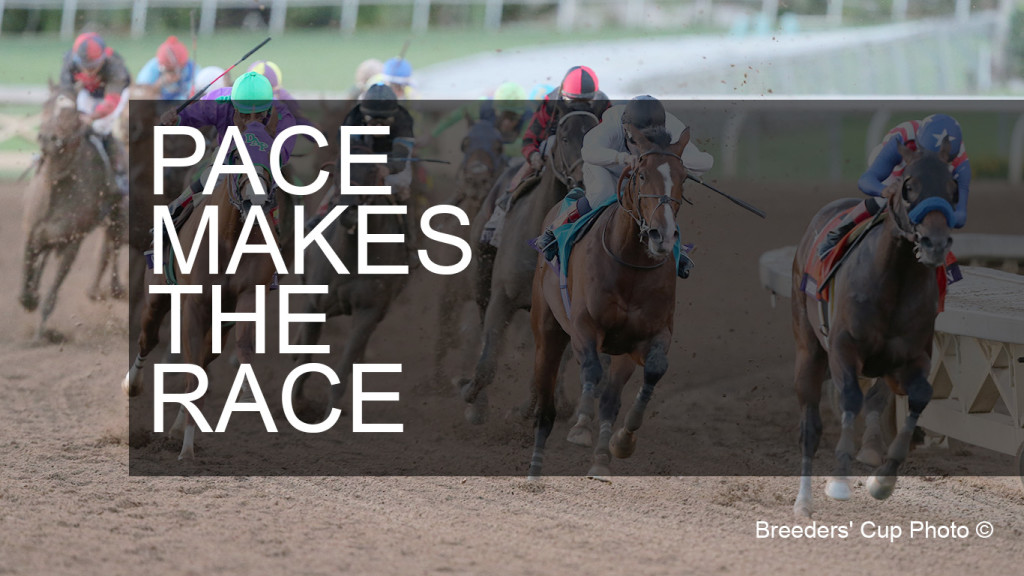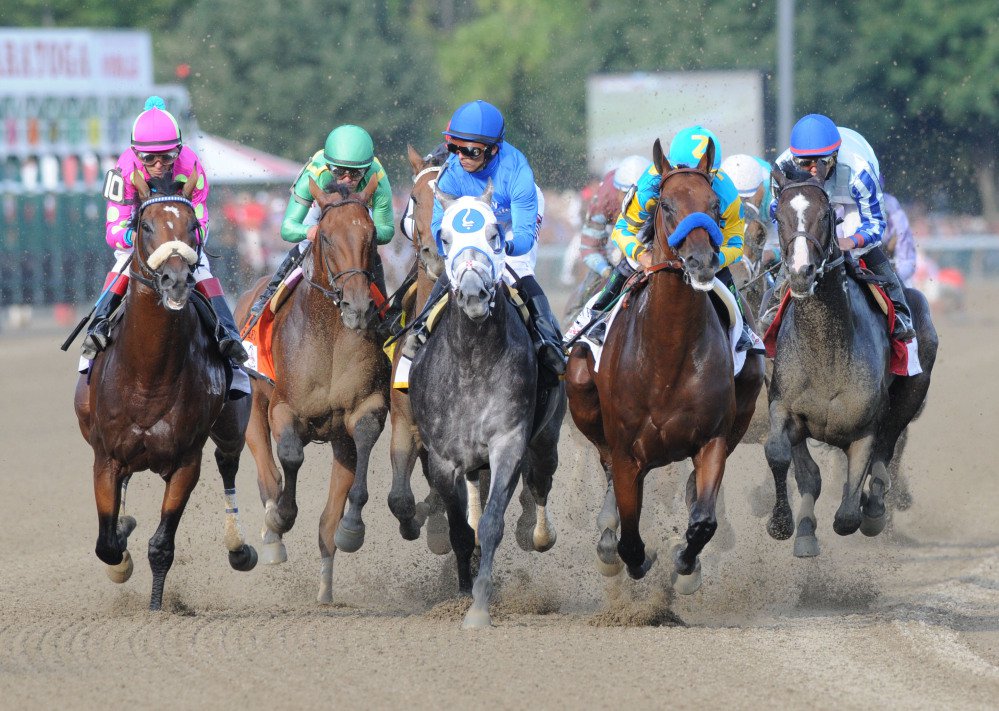

We’ve all heard it countless times before: “Pace makes the race.” There is little question the pace of a thoroughbred horse race has a significant impact on the outcome and winner. So the question becomes as handicappers, how do we deal with and decipher pace.
There is no better recent example of how pace can impact a race, and go as far as produce a winner who benefited from the pace scenario, causing the win, or loss, than this year’s Travers Stakes at Saratoga. It wasn’t the graveyard of favorites that got American Pharoah beat. It wasn’t how worked up he got galloping before a race day like crowd the morning prior to the race. Granted neither of those things helped, but what got him beat was the pace. Specifically, the internal fractions.
Let’s be realistic here. Keen Ice is a nice horse, and Dale Romans is as capable as they get, especially pointing a seemingly underrated horse for a big race. He’s a fantastic judge of horseflesh. He’ll probably develop into a nice four-year-old. As a three-year-old however he couldn’t warm American Pharoah up under a normal pace scenario.
True the first quarter mile in 24.28 was relatively slow, but things sure got faster after that. This was largely due to Jose Lezcano, subbing for Joel Rosario, taking an aggressive approach and going after American Pharoah and engaging him early and often. When two quality horses like this hook up, the pace will likely get hot as it did here. From that slow opening quarter, they went the mile in 1:35.08. I don’t recall a faster mile in any Travers and I’ve seen a lot of them. The second half mile of The Travers was run in 46.78. That’s extremely fast and rare for a mile and a quarter race. Despite these internal splits which led to a taxing race American Pharoah was able to dig down and put away Frosted who had dogged him into defeat. As by this point he could not hold off Keen Ice who capitalized on the battle and finished in a fast 2:01.57. That’s one fast Travers.
Any legit handicapper or student of the game can see what happened here. Frosted ran a credible race. American Pharoah and Keen Ice ran great races but one under optimum conditions and the other under adverse conditions. What’s clear is the pace produced the outcome.
This brings us back to how do we as bettors capitalize on the pace of the race. The first thing I offer is don’t cheat yourself. I can’t tell you how many people in the game, and not just bettors, I’m talking trainers, jockeys, owners, clockers, jock agents, and just about anyone else with a racing form look at the last two races of the horses, in the wrong order I might add, and think they have a handle on the race. Read the past performances, the pace scenario is there, sometimes it’s hidden, sometimes it’s obvious, but it’s there.
There are several past performances which offer clues to their handicappers’ ideas of pace. The Racing Form offers Moss pace figures. Brisnet offers pace numbers going as far as breaking them down to early and late pace figures. Timeform offers a pace projector which gives their computerized prediction of the pace. All of these are tools for some and I won’t knock them. I however do not use any of them. I’ll share why. First off, if you give me the past performances for a race and I can’t tell you how the pace is likely to shake out, then it’s time to hang up my tack. I don’t trust anyone’s opinion on any aspect of a horserace as much as my own. The next are the intangibles, and we will all see those differently. That’s what makes this game so great, and competitive, and a game of skill far more than chance.
If it were as simple as looking at a pace projector, or some numbers to know who’s going to be on the lead, and if they’ll be alone or hounded, then the cashier lines would be considerably longer and the prices shall we say a tad bit lower. Intangibles and knowledge have to be factored into your opinion of the pace scenario. Funny coming from a long time sheets user, but I never said they were the end all or a short cut either, just a valuable tool.
Is the rider on the speed horse aggressive, or do they like to take back? Do they dislike being on the inside with horses right outside of them, and is that the likely scenario here? Is a horse coming out of sprints into routes, or is someone coming out of some uncharacteristically fast races? Has someone gotten off bad or been affected by trips or any track bias in recent starts. These are the types of things to ask yourself and know going into a race when forming your opinion of pace.
Now this is horseracing, so we know you will be humbled shall we say at least occasionally. We have all seen those races where someone is on the lead alone when we thought there was a ton of speed, or when there seemed like a decent pace and the fractions ae crawling. The number of these scenarios will decrease for you if you ask yourself the types of questions outlined above, search the past performances for the answers, read every line on every horse, in the right order, and last but not least learn how to factor run up distances, turf rails and how timing races differs at different tracks. The clock doesn’t start when the bell rings as many believe.
Some intangibles we can’t factor. There was really no way to know Jose Lezcano would go out of character and go after American Pharoah the way he did. Joel Rosario probably wouldn’t have. Some turf races will remain baffling as well. We often see these dawdling paces and can’t understand why riders are sitting way back off of them. There are reasons. First off riders are taught to try and save ground on the grass and the last move wins. They’ve adopted this philosophy that at times it appears to cloud their judgement of pace or despite it they are reluctant to move early. They ride that way even more so in Europe and the style has kind of migrated here. I remember when riders in grass marathons used to try and steal them on the front. Now everybody seems to want to wait. But don’t fret it, if your percentage of picking the best horse is high enough, you’ll overcome enough of those frustrating pace scenarios to stay in the fight.
High Five
This week’s high five which should be a high ten goes to my good friend, and trainer when I had horses, Peter Walder. Peter won two races opening day at Gulfstream which both happened to be Claiming Crown Races. He won The Claiming Crown Iron Horse with Runs with Bulls and The Claiming Crown Glass Slipper with Moonshine Promise. Both horses were first time Walder for Loooch Racing. First time Walder has been money in the bank at Gulfstream since about 1990. They paid $11.20 and $12.20 respectively. And don’t mistake Peter for a claiming trainer. He was a neck and premature move away from training an Eclipse Award winning sprinter named Force Freeze. With the right stock he’d be at the top.
Low Five
Colic, RIP Shared Belief. Immensely talented racer gone way too soon.



